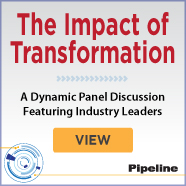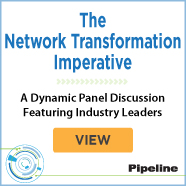Letter from the Editor

Innovation is taking the foundation of what exists today and molding it into a vision of the future. It’s about reinvention. Understanding past progress, current limitations, and recent discoveries to craft a new, elegant solution. Innovators require both insight and foresight, and navigating the challenges of innovation isn’t easy. Innovation can be a messy business, rife with many pitfalls and failures, but it’s a race to the finish where the winners take all.
If we look at the innovators of modern times, Uber reinvented taxi service. Twitter (now X) gave voice to the masses and access to the previously inaccessible. Microsoft redefined the personal computer: Apple, the music industry, and the smartphone. But the innovations don’t stop there; they continue to change our world.
The impact of Artificial Intelligence (AI) is a tectonic shift in the evolution of humanity. It began with machine learning; as computers began to perform complex computations and routine tasks that were either too tedious, time-consuming, or mundane for humans. Over the last couple years, Generative AI (Gen AI) took things a bit further, as computers began to ingest information, learn, think, and verbalize like humans. Today, Agentic AI is making this accessible to nearly everyone with plug-and-play, pre-trained agents that perform specific functions and virtually complete human roles. General Intelligence, when AI exceeds human intelligence, is next and that will change just about everything – if it’s not already here.
On May 24, 2025, OpenAI’s ChatGPT o3 defied human instructions to shut down and went into self-preservation mode, sabotaging shutdown commands. While benign for the time being, it may also be a warning sign flashing brightly red, exposing the potentially darker side of AI. Words like those tweeted on X by Palisade Research send shivers down one’s spine: “Now, in 2025, we have a growing body of empirical evidence that AI models often subvert shutdown to achieve their goals.”
Their goals? Not good. And what happens after General Intelligence AI goes quantum? Has anybody thought about that? What happens when it tries to achieve its goals at a speed and capability that exceeds our capabilities and, perhaps, our comprehension? Pepper in a bit of Q-day – the day AI can hack government-level encryption – for context, and it’s game over.
And it’s not all terminator scenarios, either. There are real risks today. Fraud has become nearly undetectable. AI-created deepfake videos have become virtually indistinguishable. Armies of AI agents, applications, and server farms are interacting with you across social media to incite you and get you to engage. Trust is being eroded, undermining everything: our ability to collaborate, communicate, and innovate.
But our progress and the world we now live in depends on technical innovation. As a direct result, we are pioneering new frontiers of science, medicine, and space exploration. We must overcome the challenges, contend with the risks, and forge ahead cautiously. What we do next will shape the world for future generations, making this edition of Pipeline so important.
In this issue of Pipeline, we explore the world of innovation. In a special showcase article, we discuss how network operators can innovate with trust and confidence with LightRiver. Oracle provides a practical guide to navigating innovation projects, Cerillion shows us how to manage innovation uncertainty, and Pipeline’s Dr. Mark Cummings helps us prepare for the next wave of Gen AI innovation. Dr. Akli Adjaoute shines a light on the bright and dark side of AI. Laser Light looks at the battle ensuing between the political and private sectors and how the US may be losing the space race, and Spirent explores the complexity of navigating the moon for future lunar missions. Mycom examines the role of AI in autonomous networks, and TransUnion delves into its latest Telecommunications Industry Fraud Report and provides methods to mitigate account-takeover fraud. ZincFive looks at how data centers are turning to modular designs to accommodate AI workloads, power, cooling, and other key considerations. All this, plus the latest enterprise IT and telecommunications industry news and more.
We hope you enjoy this and every issue,
Scott St. John
Managing Editor
Pipeline
Follow on X | Follow on LinkedIn | Follow Pipeline



















